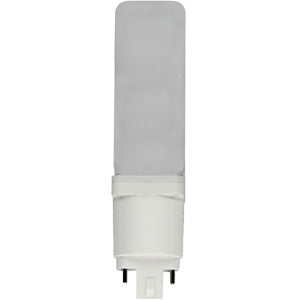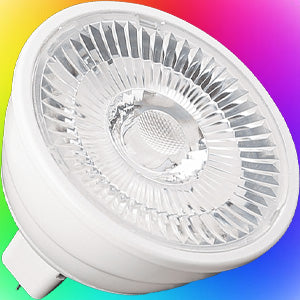LED Light Bulbs
The benefits of LED light bulbs include lower energy costs, longer life for reduced maintenance, instant ON illumination, minimal UV and IR radiation and no mercury. Most LED bulbs can be used with LED rated dimmers, occupancy sensors and other control devices. In commercial and institutional applications, replacing existing light sources with LED usually offers an attractive ROI when both energy and maintenance savings are considered.
If you need assistance, call 800.784.1998 to speak with one of our lighting specialists.
LED Lighting Frequently Asked Questions
Do LED Bulbs Dim?
If you've got dimmer switches in selected areas of your home, you'll want to look for dimmable LEDs. Look on the package of the bulb for dimmer compatibility, or on the manufacturer's website. While some CFLs are also dimmable, they can often give off a buzzing or humming noise that may be distracting. With dimmable LEDs, that is not a problem.
When most LED bulbs are dimmed, the light output is reduced, but the light does not appear warmer as much as it does when you dim incandescent bulbs. This may or may not be an issue depending on the application. If "warm dimming" is a requirement, some LED light bulbs mimic incandescent when they are dimmed. These bulbs can be especially useful in setting a mood or even making it easier to fall asleep at night, as they shift to a warmer color temperature.
Any Health Concerns?
Unlike linear and compact fluorescent bulbs, which contain mercury and can pose a health hazard if broken, LEDs do not have any mercury at all. While more expensive than a CFL, they last at least twice as long between bulb changes.
LED bulbs also do not have the flickering problem that some old liner fluorescent tubes had. Nor do they use magnetic ballasts, which could cause an audible buzzing noise with T12 fluorescents. LEDs use a driver to regulate voltage, but the light output is extremely stable with no audible noise from the LED driver.
What's the Deal With LED Strips?
LED strip and rope lighting is one of the most flexible types of lighting product on the market now, and are providing professional designers and DIY-ers with endless inspiration for creative uses of light.
LED strips produce their light from a flat deliver mechanism. These strips can be taped under counters or steps, or be used to highlight art exhibits or framed images. An external LED driver is used with the strips and provides the power source to the bulbs. In fact, without the driver or a mechanism to regulate the voltage, the strip or rope wouldn't even work.
Why Are They So Expensive? What if it Burns Out in 5 Months?
While most LED bulbs are rated for 25,000 hours or more, that doesn't guarantee the bulb you purchase will last that long. If it's a dud, it may stop working in a few weeks or months. What do you do then?
Thankfully, LED manufacturers are aware of this potential issue and offer longer warranties for LEDs. Warranties may be up to five years, although some are less. The manufacturer will often cover the replacement cost of the bulb if it fails before the end of the warranty period.
Of course, if you buy from a brand new LED manufacturer or a value brand, there is no guarantee that company will be around in 3-5 years to replace your bulb. If you're really worried about the bulb failing, then purchase from a well-established company.
Utility Rebates
Your utility company may offer energy efficiency incentives for lighting upgrades in commercial and residential applications. Retrofitting lighting to LED light sources and adding lighting controls can qualify for rebates.
Products on ProLampSales displaying these icons may qualify for rebates:

Go to this page, enter your zip code and see energy efficiency incentives offered in your area.

















